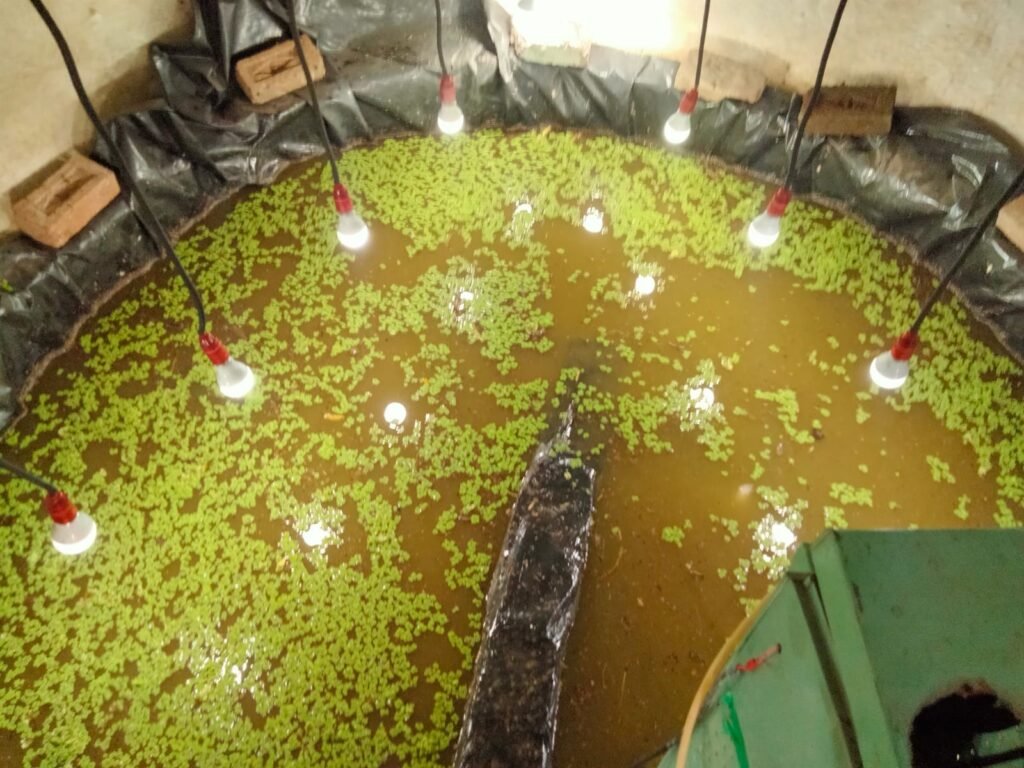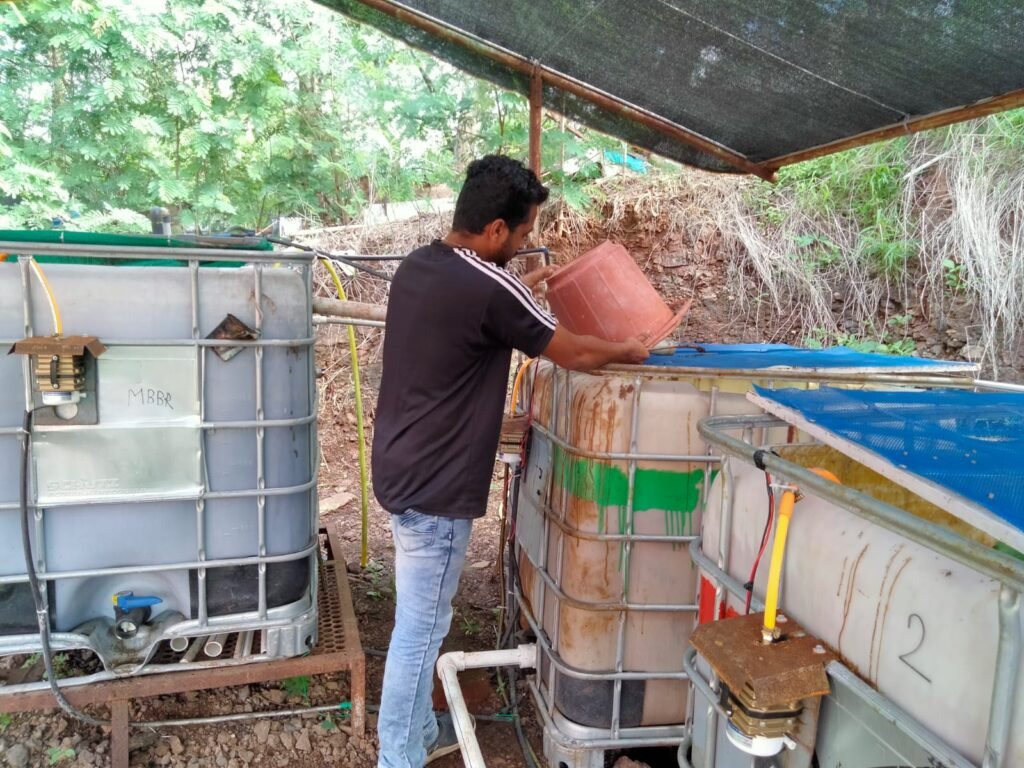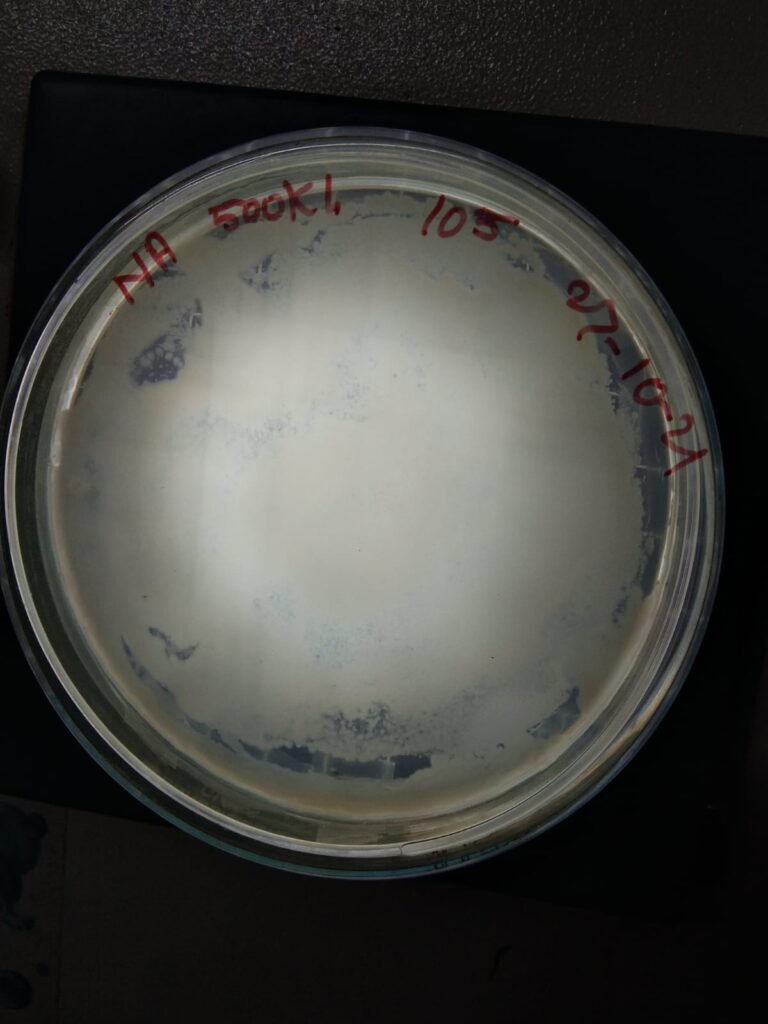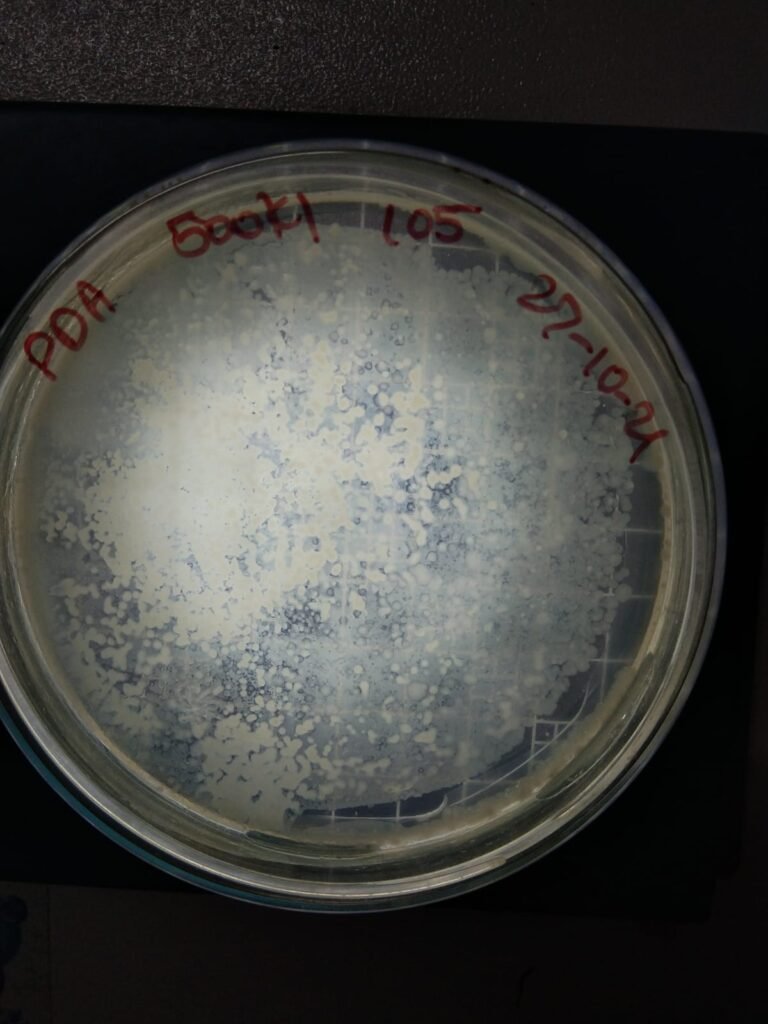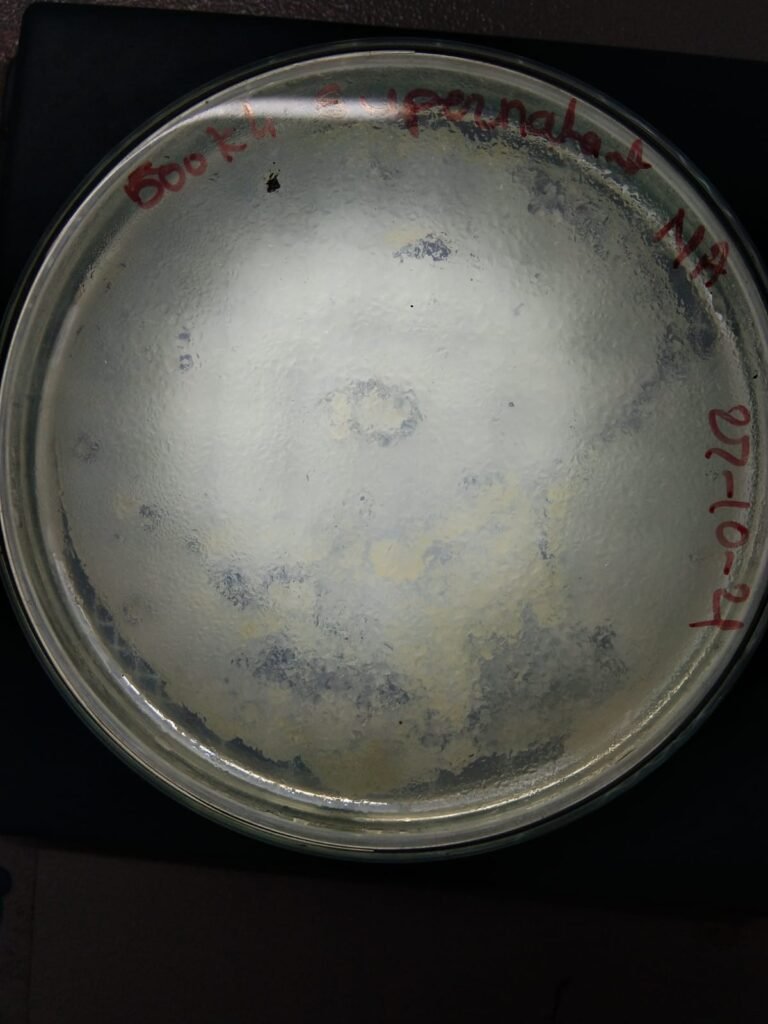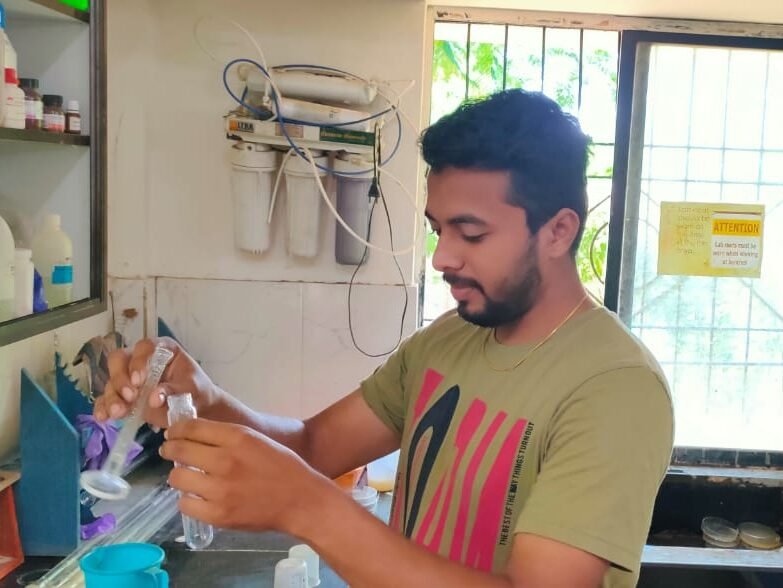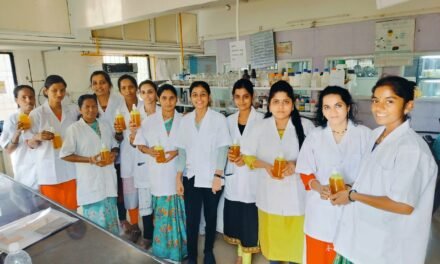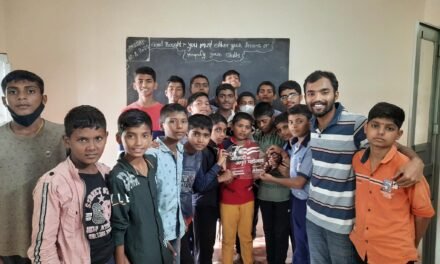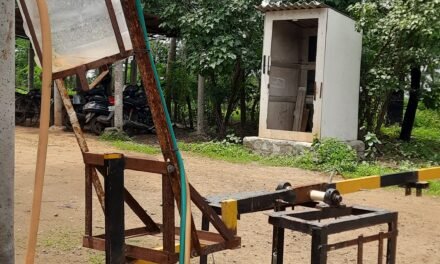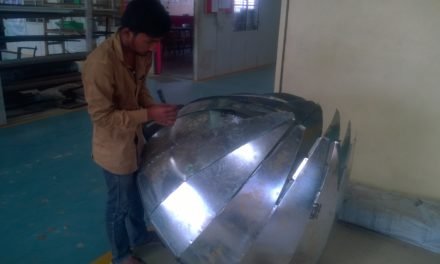05/07/2021
PREPRATION OF NUTRIENT AGAR AND POTATO DEXTROSE AGAR
- Nutrient Agar:- It is used for the cultivation of bacteria and for the enumeration of organisms in water, sewage, compost and other materials. Nutrient agar is popular because it can grow a variety of types of bacteria , and contains many nutrients needed for the bacterial growth like peptone source of nitrogen, meat extract also acts as source of nitrogen. and agar is used to solidify medium and create surface to grow bacteria.
- Potato Dextrose Agar (PDA) is used for the cultivation of fungi.is composed of dehydrated Potato Infusion and Dextrose that encourage luxuriant fungal growth.

08/07/2021
SOIL TESTING
A soil test gives you a snapshot of some of the nutrients in your soil and helps you decide which ones to add to make your soil more productive. If you graze animals you need to test every 2–3 years to ensure nutrients are in balance.
I had tested soil samples by using Prerana kit, in that I had checked for N, P,K,OC,EC and pH. from that we can suggest fertilizer dosing to that farmer.
- If there is deficiency of Nitrogen then we can suggest nitrate or ammonium based fertilizers like urea and ammonium sulfate.
- If there is deficiency of phosphorus so we use DAP which is the world’s most widely used phosphorus fertilizer.
- If there is deficiency of Potash then we can use mined rock powders and wood ash

09/07/2021
ESTIMATION OF Na,K,Ca by FLAME PHOTO METER
A traditional and simple method for determining sodium(Na) and potassium(K) in sample involves the technique of emission flame photometry. This relies on the principle that an alkali metal salt drawn into a non-luminous flame will ionise, absorb energy from the flame and then emit light of a characteristic wavelength as the excited atoms decay to the unexcited ground state. The intensity of emission is proportional to the concentration of the element in the solution.
We are probably familiar with the fact that if you sprinkle table salt (NaCl) into a gas flame then it glows bright orange and KCl gives a purple colour. This is the basic principle of flame photometry

12/07/2021
AZOLLA HARVESTING ,DRING AND DOSING
- Azolla is a highly productive water fern which is rich in protein content . It doubles its biomass in 2-3 days or more, depending on conditions. If there is less sunlight then Azolla can’t grow well.
- We can use this Azolla as fodder for cow, buffalos, hens ,sheep and etc.
- We dry Azolla by sun drying to feed hens.
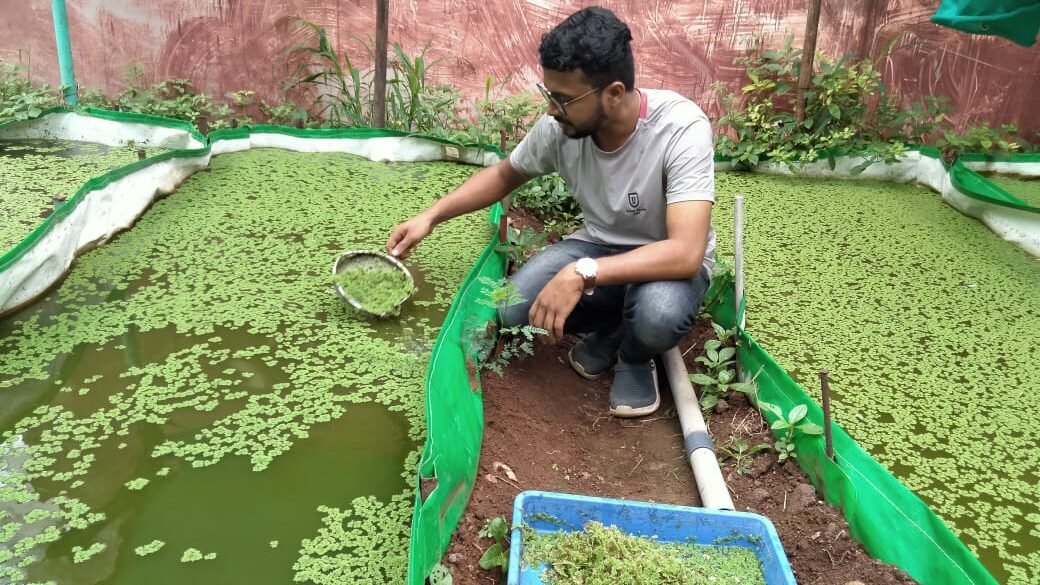
16/07/2021
AZOLLA BED PREPRATION
To grow azolla, we are plotting azolla beds having size 12x4x1 feet. To plot beds we have to create a plan land to avoid inclination of water at one end. to avoid that we give support of rods to that bed so it can tolerate the pressure which is created by water. after that we add water , 10 kg soil , fertilizers and 1 kg azolla. and azolla beds are ready to grow azolla.

31/07/2021
Collection of soil for soil testing
- Divide the field into different homogenous units based on the visual observation and farmer’s experience.
- Remove the surface litter at the sampling spot.
- Drive the auger to a plough depth of 15 cm and draw the soil sample.
- Collect at least 10 to 15 samples from each sampling unit and place in a bucket or tray.
- If auger is not available, make a ‘V’ shaped cut to a depth of 15 cm in the sampling spot using spade.
- Remove thick slices of soil from top to bottom of exposed face of the ‘V’ shaped cut and place in a clean container.
- Mix the samples thoroughly and remove foreign materials like roots, stones, pebbles and gravels.
- Reduce the bulk to about half to one kilogram by quartering or compartmentalization.
- Quartering is done by dividing the thoroughly mixed sample into four equal parts. The two opposite quarters are discarded and the remaining two quarters are remixed and the process repeated until the desired sample size is obtained.
- Compartmentalization is done by uniformly spreading the soil over a clean hard surface and dividing into smaller compartments by drawing lines along and across the length and breadth. From each compartment a pinch of soil is collected. This process is repeated till the desired quantity of sample is obtained.
- Collect the sample in a clean cloth or polythene bag.
- Label the bag with information like name of the farmer, location of the farm, survey number, previous crop grown, present crop, crop to be grown in the next season, date of collection, name of the sampler etc.

Isolation and sub culturing of Fungi and Bacteria from Agri-compost culture.
Sub culturing is the method of transferring microorganisms from one growth container to another, thereby offering them with fresh supply of nutrients either in a solid or a liquid medium So the basic objective of this test is to prepare subculture of bacteria and fungus
REQUIREMENTS
Materials:
- Bacterial Culture in Nutrient agar plate
- Fungal culture in Potato Dextrose agar plate
- Sterile medium
- Nutrient agar plate
- Potato dextrose agar
- Inoculating wire loop
- Alcohol
- spreader
- Sterile D/W
PROCEDURE
Subculturing method of bacteria
Inside the laminar airflow, take the plate cultures containing the isolated colonies of bacteria grown on them. Pick up an isolated colony or more colonies in the inoculating loop. And then close this plate Now transfer this single colony or few colonies of bacteria into the new plate by streaking in a zig-zag method. To avoid contamination, it is advisable to lift the lid of the plate to minimum Then close the lid, invert it and incubate the plate for 24-48 hours.
Subculturing method of fungus
Inside the laminar airflow, take the plate cultures containing fungus Open it very less as the spores may come out. Then show the tip of the inoculating loop in the Bunsen bummer to sterilize it. Then a loopful of fungal culture and streak it in the new sterile PDA plate Then close the plate and incubate it for 48-72 hours.
CONCLUSION
By following the above method we can easily subculture the bacteria and fungus for long term preservation various properties of bacteria and fungus
Activation of LED azolla dome
Date 01/10/2021
To check the light intensity of light on growth of azolla we are growing azolla in a dark room where we supply artificial light with know intensity .
Increasing the light intensity increases the rate of photosynthesis, until some other factor – a limiting factor – becomes in short supply. At very high light intensities, photosynthesis is slowed and then inhibited, but these light intensities do not occur in nature.

Addition of slurry and soil 
azolla addition 

Ready azolla LED dome
Fish feeding
How Often Should I Feed My Fish?
For the most part, feeding your fish once or twice a day is sufficient. so we give fish feed twice a day at morning and at evening.
We give Normal fish feed which is high in proteins as well as we give azolla by boiling and fermenting and as it is.
Microbial Count of Bio-reactor beds of SI group
Biological wastewater treatment is a biochemical process that is centuries old. Even today, as the quantity of industrial effluents discharged is on the increase and the types of pollutants present in the effluent streams are getting diversified, wastewater treatment processes are being investigated and experimented exorbitantly all over the globe.
It is always desirable to couple wastewater treatment with waste utilization. In such a situation, it becomes invariable to propose and develop renovations in effluent handling and treatment processes to improve their overall economy as well as their energy efficiency.
As discussed above Bio-reactor beds of SI group are get disturb regularly. There are two bio-reactor beds 400KL and 500 KL in SI group, Ranjangaon. They are also struggling to maintain there bio-reactors to treat effluent. The bioreactor of 400KL get settle down fast as compare to 500KL. So To check the microbial Differences in both the reactors we had plan to check microbial count of them .
- To Check microbial and Fungal by following method
- the sample was collected and brought in Vigyan Ashram by Mr. Kalbhor sir who is head of ETP
- Prepartion of NA and PDA as given above.
- Serial dilution of both 400KL and 500 KL sample up to 10^10
- Inoculation by pour plate technique.
- Incubated at 37°C for 6-7 days
| Sr.No. | Sample Name | 400KL | 500KL |
| 1. | Original effluent | ||
| 1)Bacterial count 2)Fungal count | 1)111x1011 2)50x1011 | 1)Uncountable 2)156x1011 | |
| 2. | Supernatant effluent | ||
| 1)Bacterial count 2)Fungal count | 1)46x108 2)32x108 | 1)102x108 2)51x108 | |
| 3. | Diluted | ||
| 1)Bacterial count 2)Fungal count | 1) Low 2)59x106 | 1)High 2)84x106 | |
| 4 | Diluted | ||
| 1)Bacterial count 2)Fungal count | 1)Low 2)113x107 | 1)High 2)175x107 |
From above observation we can conclude that the bacteria and fungal count in 400 KL are very low that 500 KL so that 400 KL bed get disturbed. to maintain the microbial flora proper we have to decide or focus on nutrient supply required by micro organisms. to find out proper dosing of nutrient to give then we have to design one experiment. so we can get proper dosing.
Identification of Bacteria and Fungus from Agricultural Decomposition
Preparation for Mother plates
Preparation of Media
- Nutrient Agar for Bacterial identification
- Potato Dextrose Agar for Fungal identification
- Prepare NA and PDA medium and dissolved in 500 ml Distilled water
- Autoclave the prepared media at 121 degree Celsius for 15 min.
- After 30 mins media keep in laminar air flow under UV treatment for 10min it help to prevent contamination.
Plates Preparation
- pour the plates
- wait until media gets solidify
- After the solidified media treat the plates under UV for 10 mins
- After solidification Agriculture compost culture were inoculated by spread plate technique.
After 5 days unfortunately on both medias contamination were observed.
Again Same process were followed with the proper care and handling.
- After 2 days again contamination were observed on NA plate
- After 8 days various colonies of fungus were observed on PDA.
- This PDA plate are preserve as a mother culture in refrigerator.
Sub culturing of mother plates
- PDA plates were prepared For first sub culturing
- single colony were took and strike on PDA by four quadrant method.
- we had about 8 different colonies with different color and shape .
- All these colonies were separately grown in different PDA plates. And incubated a 37°C for 7-8 days.
- After 8 days pure colonies were observed. These are also preserved for second sub culturing.
Second Sub-Culturing
Same process as above were followed
Third Sub-Culturing
same process as above were followed




